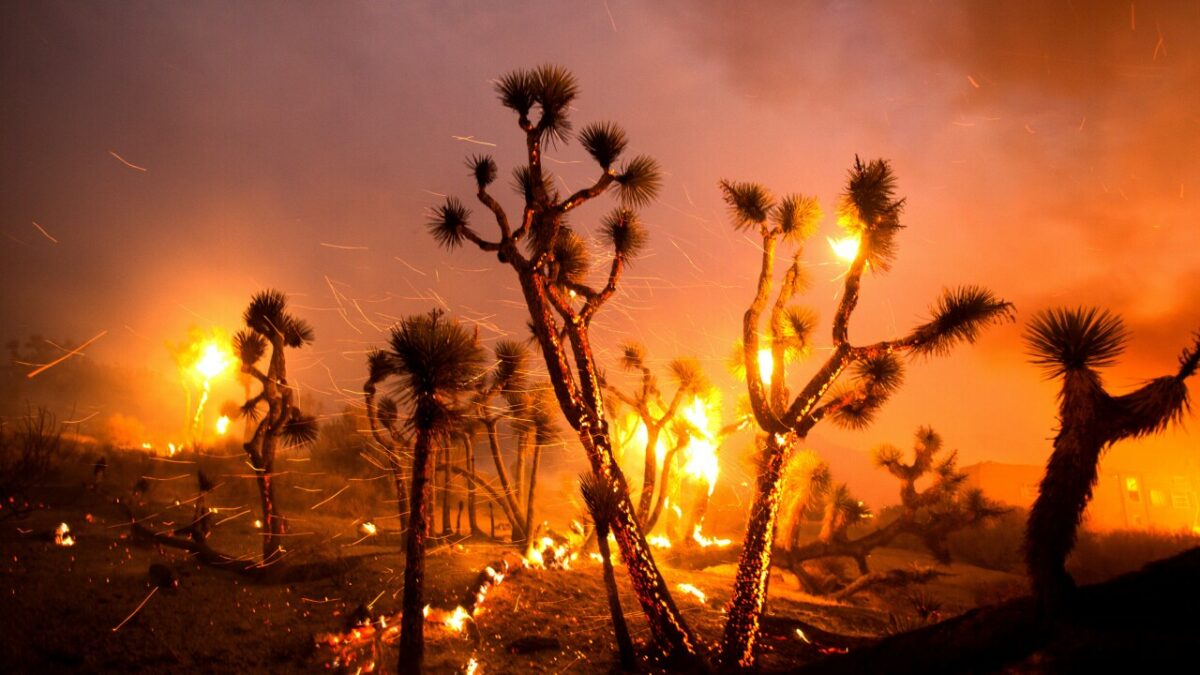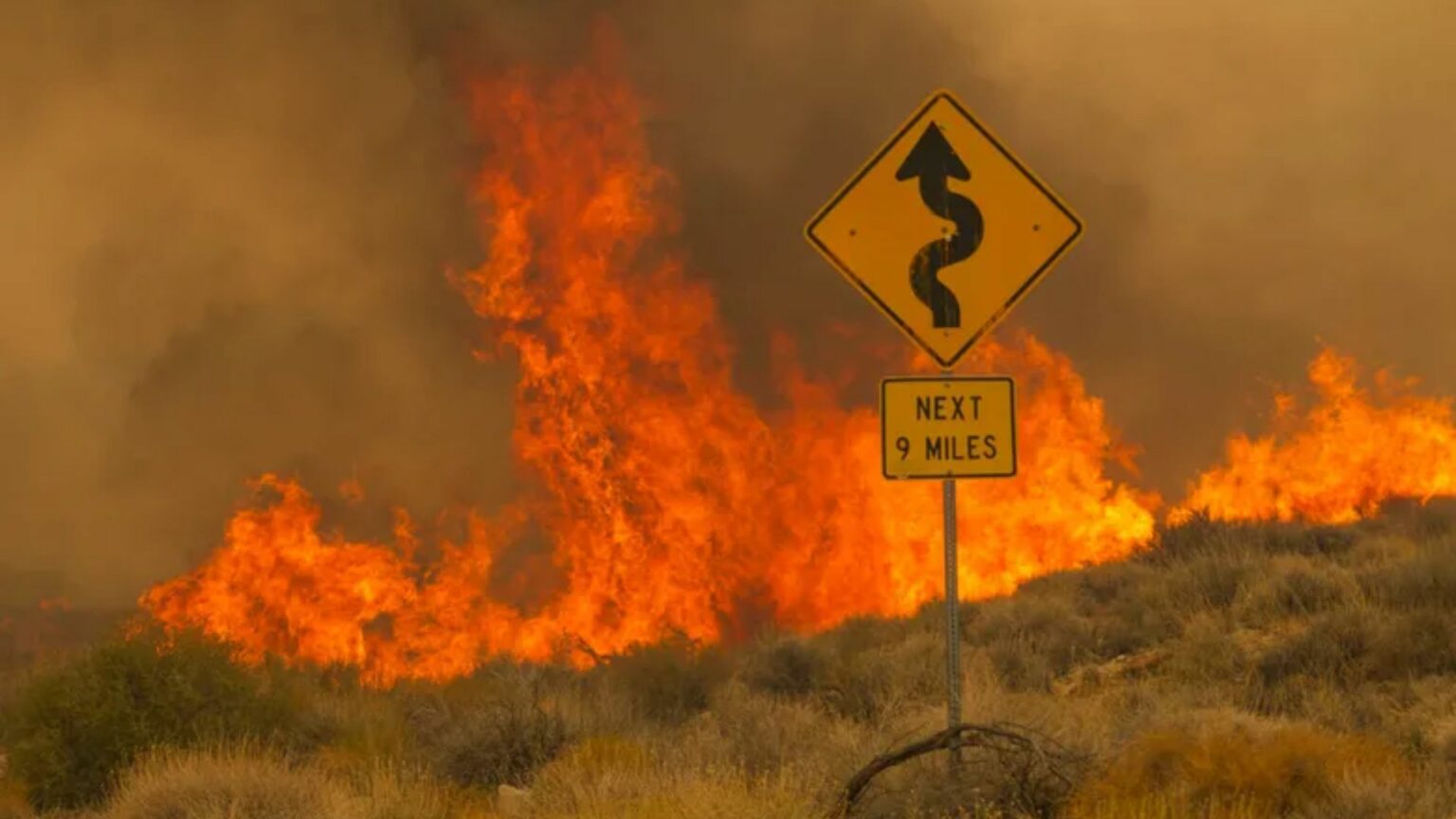The New York fire does not seem to calm down any sooner. It continues to find its way in all directions and is burning down hundreds of Joshua Trees after setting ablaze 77,000 acres of land, as reported on Monday.
Flames as high as a two storey building, burning their way through the mojave desert. The desert scrub, Joshua and Juniper tree forests, which are only found in the South-West and are protected, all reduced to ashes in the hands of the York Fire.
Table of Contents

The Fire Tornados
The forest rangers are calling the phenomenon as the “wind that is breathing fire and flames” or “the fire tornado” that forms at high temperatures when turbulent winds combine with the desert heat.
The southwestern US is home to the Joshua Tree. After the Dome fire, which burned across 40,000 acres in 2020, the york fire is the second significant wildfire to have an effect on Joshua trees in the last three years. When combined with certain climatic conditions, the Joshua tree forests can act as dry fuel and a a convenient source of ignition for fires, causing long-distance fire runs and intense flames, which results in extreme fire behaviour like ‘fire tornados’ or ‘fire whirls.’
The term “fire whirl” is used by the U.S. Forest Service to describe a spinning vortex column of rising heated air and gases that arises from a fire and carries smoke, dirt, and flames upwards. Less than one foot to more than 500 feet in diameter are the sizes of fire whirls. A fire swirl that is far bigger and stronger than usual does, however, occasionally happen. Fire whirls, which are whirlwinds produced by the heat of flames, are more frequent than fire tornadoes.
Areas Affected By The York Fire
The New York fire which started on Friday, 28th July due to the unpredictable heat waves and hot temperatures is causing a massive wildfire that is raging out of control in California’s Mojave national preserve to spread quicker than we could have imagined. In the wilderness, preserve’s remote Caruthers Canyon section. On Sunday, 30th July, it moved into the Nevada regions and spewed smoke even further east, into the Las Vegas Valley.
The area is experiencing dry and hot conditions, and there are two significant fires burning in California. Firefighters claimed they had made headway in extinguishing the Bonny fire in Riverside county, which was the other conflagration.
The York fire is one of many that are currently raging across the nation as certain regions swelter under intense heat, including one that is raging on both sides of the US-Canadian border. According to fire officials, the fire near the California-Nevada state line is still “growing rapidly” and producing extreme weather conditions that make it more dangerous and challenging to contain.
Containment Status
There is no progress on the control and containment front for the York Fire. The fire has not been contained, and it continues to grow out of hand and as of Monday, it has expanded over the Mojave National Preserve.
The National Interagency Fire Centre announced Monday that 64 significant fires are currently burning across nine states as the hot and dry weather persists, including 12 large new flames that were reported on Sunday.
According to the EPA, more than 11,500 wildland firefighters and other employees are assigned to situations around the United States.
Ten days prior to this wildfire being detected in the Mojave National Preserve’s New York Mountains region, park authorities issued a ban on all open flames due to the extremely high fire risk in the federally protected desert.
“Our people were concerned about the very high temperatures that came in July despite the fact we had an adequate moisture level this winter season,” said the Park officials.













